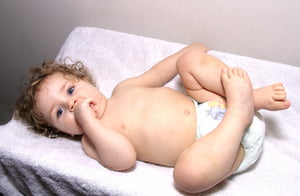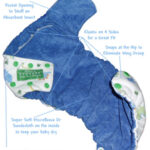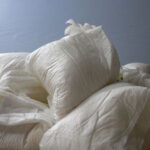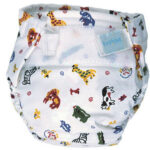Usually harmless, skin irritations can make your baby uncomfortable. Some skin irritations may not cause any discomfort at all and go away without any need for intervention while others may cause itchiness and pain that can make your baby cranky. Usually, if unattended, skin irritations may lead to infections and leave scars. Knowing the different types of skin irritations that your baby may encounter will help you relieve your baby’s symptoms.
A diaper rash shows reddening of your baby’s skin around the diaper area. The causes of diaper rash include diapers worn too tightly, leaving your baby’s diaper wet for too long or using a brand of detergent, diaper or baby wipes that may not suit your baby’s skin. Avoid diaper rash by changing your baby’s diaper whenever it’s wet, washing the diaper area with warm cloth and applying with diaper rash cream containing zinc oxide. Allow good air circulation by loosening your baby’s diaper. Whenever you’re changing your baby’s diaper, make sure to leave the diaper area open to the air as long as possible to dry out. Avoid applying talcum powder, which your baby may inhale and cause lung problems. Corn starch, a better option than talcum powder, can cause diaper rash so it’s best no to use powder at all, says WebMD.
Prickly heat usually appears as groups of small pinkish-red bumps on your baby’s sweaty body parts such as the neck, diaper area, armpits and skin folds. Dress your baby in light, loose-fitting clothing, especially during the warmer months. Do not over-bundle your baby during colder weather. Dressing your baby in layers when it’s cold will make it easier for you to remove piece by piece when the temperature starts heating up. Keep your home cool, dry and well-ventilated.
Eczema
An itchy, red rash that appears in response to a trigger, eczema can occur on your baby if there’s a family history of asthma, allergies and atopic dermatitis, according to WebMD. Symptoms may appear on your baby’s elbow, chest, arms, face and at behind the knees. Eczema thickens, dries and becomes scaly over time. Find what triggers your baby’s eczema and avoid them at all times to help prevent and relieve symptoms. Using gentle soaps on your baby and gentle detergents on clothing will prevent reactions. Applying moderate amount of moisturizers over the affected parts can also help treat eczema.
Cradle Crap
Cradle crap often appears as scaly, waxy, red rash on a baby’s head. In some cases, you may also find it on the eyebrows, eyelids, sides of the nose and behind the ears. Consult your baby’s doctor if you see symptoms of cradle crap on your baby. Your baby’s doctor will recommend a shampoo, baby oil, cream and lotion that you can use to treat this skin irritation. In most cases, cradle crap appears during the first or second month after birth, and usually disappears within the first year.
Reference:
WebMD: http://children.webmd.com/slideshow-baby-skin-care






